Article by Bjorn Moreira
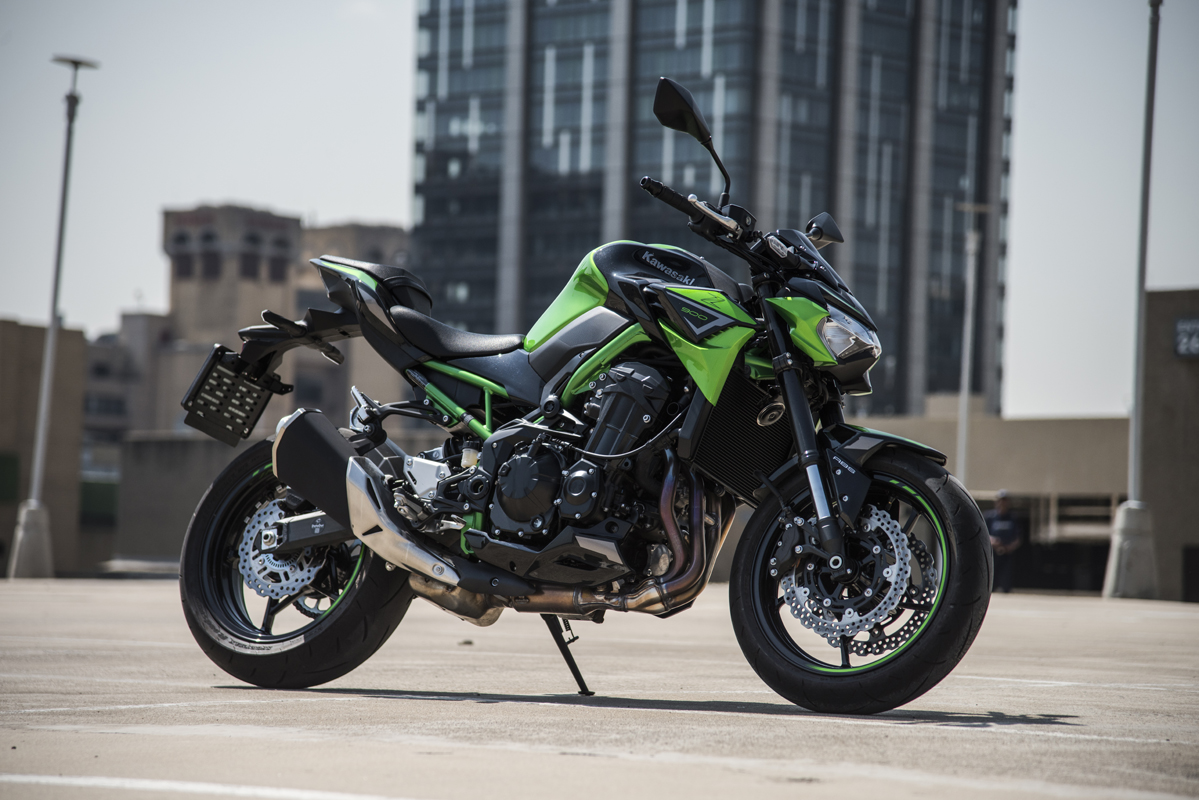
What can you say about Kawasaki’s Z900 that hasn’t already been said? The highly praised king of smooth took over the role of the Z800 back in 2017 and soon thereafter the Z1000, bringing riders a lighter tubular chassis, sharper handling and improved build quality. Five years down the line the Z900 is still around and has gone through design updates along with subtle tech updates to keep up with the times. All in all, the Z900 is still the same creamy smooth ‘Z’ that slipped its way into the exciting and competitive middle-weight naked bike class five years ago.
The question I found myself asking is, how does the Z900 fare with the current crop of nakeds and what makes it stand out from the massive horde of buzzing hoons?
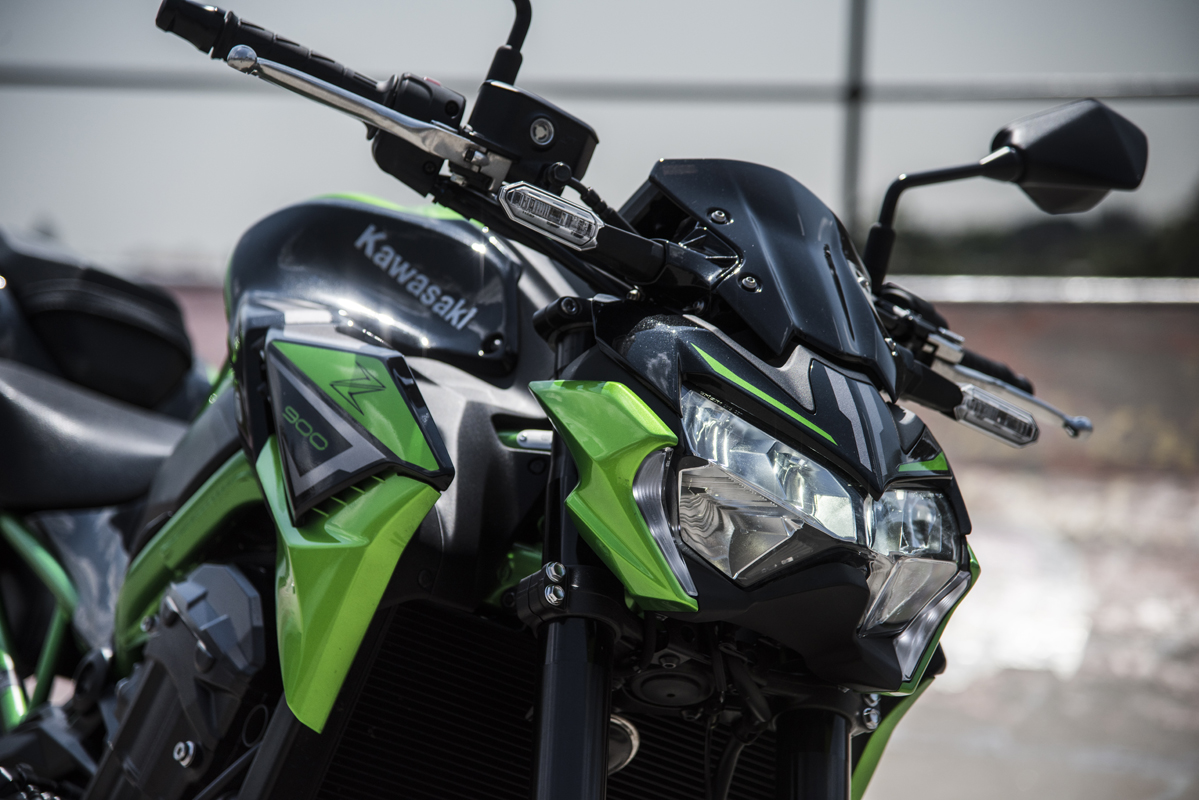
Rolling into 2022 we see a familiar face, almost like bumping into a good old friend that reminds you of the good times. The Z900 greets you with its angular “Sugomi” design language followed by excellent build quality, starting from the wasp-like LED headlight, and broad shoulder fairings, to the sharpened-off tail section. Well the aesthetics of the Z900 can divide opinions, there’s no arguing that it is uniquely Kawasaki.
Kawasaki didn’t stop at the design, they’ve paid special attention to the smaller details too, like the metallic ‘H2-like’ tubular green frame, wavy discs, standard fly screen, Z-shaped LED tail-light and machined bar ends. These smaller details are what many manufacturers tend to just slap on last minute without much thought, but not so with Kawasaki and for me that goes a long way.
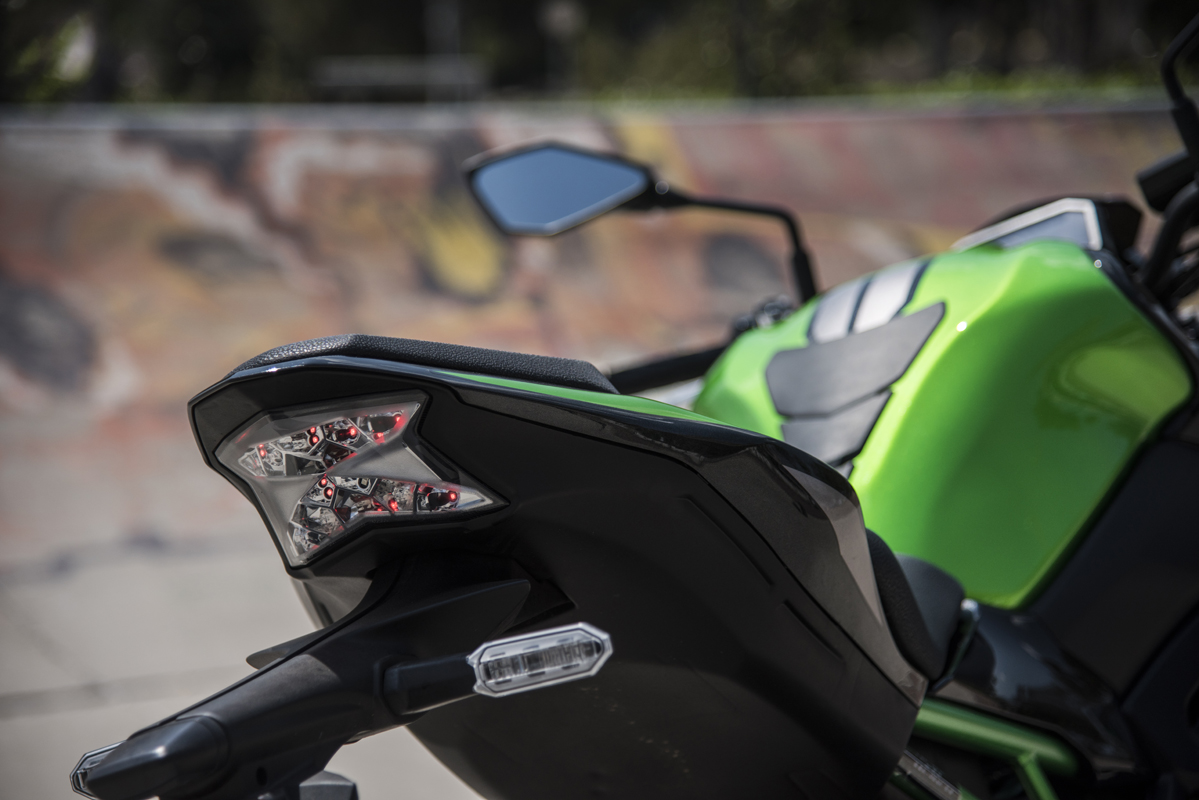
Who said inline-fours have no guts? In most cases, this statement stands a truth, but not so with the Z900. This fierce assassin throws its Kunai blades at its opponents with bags of midrange punch and low-down torque, making the Z as versatile as it gets. The Z’s 948 cc powerplant has always been the heart and soul of the Z900’s linear nature—the definition of smooth.
With 123 hp on tap and 99 Nm of torque, the Z pulls strong from as low down as 2,000 rpm, all the way to its 10,500 rpm redline. The low-down torque and light throttle make the Z a capable urban missile, allowing you to carry higher gears which in turn translates to a smooth and more economical ride. Looking down at the TFT display while cruising at 120 km/h on the highway, I saw the evil green purring at just 5,000 rpm with minimal vibration coming from the bars and pegs, but nothing worth stressing about.

On the 4.3” TFT display you’ll see three pre-programmed riding modes: Sport, Road, Rain and then one custom mode for the hooligans that want to turn it all off called Rider. Now pre-programmed explains itself, but here’s the easy science behind it: Sport mode has full power and TC set on 1, Road has full power but TC set on 2 and Rain has low power and TC set on 3. At first, I thought rain mode to be a bit of a gimmick, but after thinking about it Rain mode is really there for two reasons and that’s for rainy conditions and for those who are still finding their “sea legs”.
After finding my way around Kawasaki’s easy-to-understand and neatly laid out riding information on the dash, I stuck the Z in Sport mode. Sport mode in my opinion really suited the Z900’s chassis as the addition of traction and power control helped reel the bike in, or get the most out of the machine without much restriction. In town you can really feel how light and precise the clutch feel is, the movement on the shifter is just so short and quick—it just feels like it was tuned by people who ride.
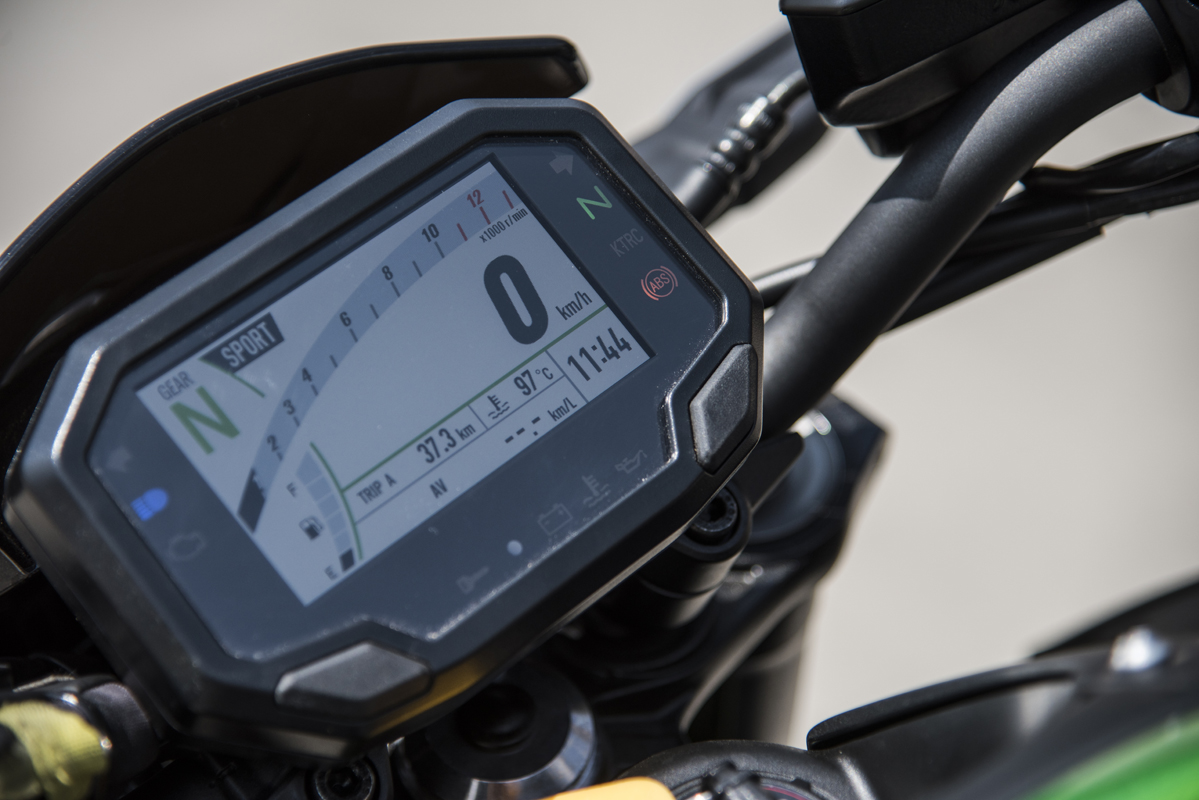
A downer for me was that the main menu settings couldn’t be engaged on the switchgear but only on the buttons of the screen and secondly, I would have loved to also see a standard quick-shifter on the Z900—the power of the Z and intoxicating exhaust note warrants that extra performance factor.
When it comes to handling, I just have to use the “v” word again, versatile. Whether you’re a daily commuter or corner scratcher, the Z900 can do it all well and a lot of that is thanks to its chassis and suspension. Yes, it’s not shiny gold Öhlins like on the ‘SE’ model, but the chassis is already just so good that it gives you confidence right out of the blocks. In all honesty, it’s one of the only bikes that I’ve ridden and instantly felt at home on.

The suspension is stiff but well damped, which makes longer stints in the saddle doable and heaven on the twisties. My personal handling preference when it comes to a motorcycle is a stable and planted front end and that’s exactly what the Z900 offers, without feeling heavy. The steering is very stable, which makes leaning onto the edge of the tyre on faster sweeps just effortless.
Once out of the bends there’s lots of stopping power at both ends provided by the Nissin callipers. The only drawback for me was the standard Dunlop Roadsport 2 tyres which just felt vague and would brake loose just by looking at them, thankfully a good set of Pirelli Diablo Rosso’s, fitted by Kawasaki’s technicians made the Z stick to the road like jam on toast.
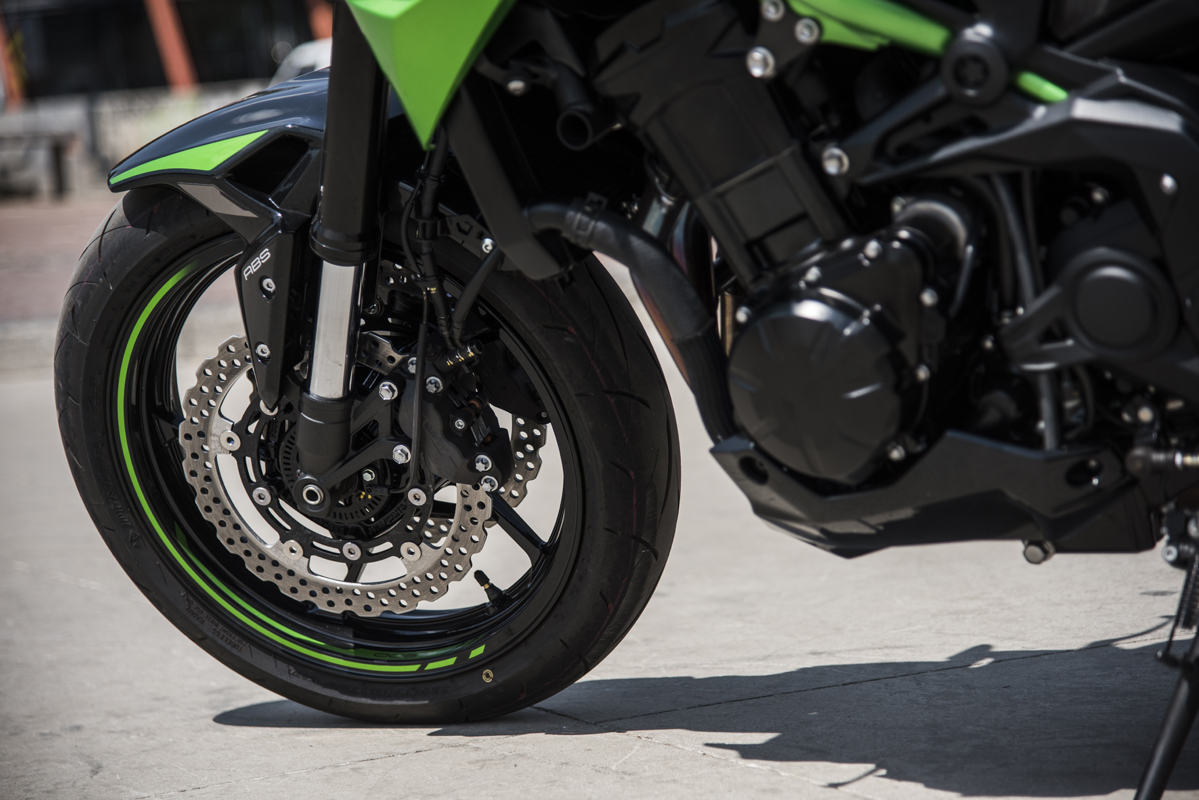
After a long day’s ride or work and back commute, the Kawi should return a reasonable fuel economy of just around 20 km/L. In two hectic days of slow JHB traffic and smooth riding, I actually got 23.3 km/L, but if you going to loft the front wheel you should see a number around the 18 mark.
If you are the kind of rider that likes to ride spiritedly, the Kawasaki will still do so with a few litres of fuel to spare with its surprisingly big 17-litre fuel tank—a good 2 to 3 litres more than most of the bikes in its class. The ergo’s are really good too. The seat is firm yet comfy, the stretch to the bars is just right and the footpeg position is mid-set—definitely a bike I’d smash big distance on.
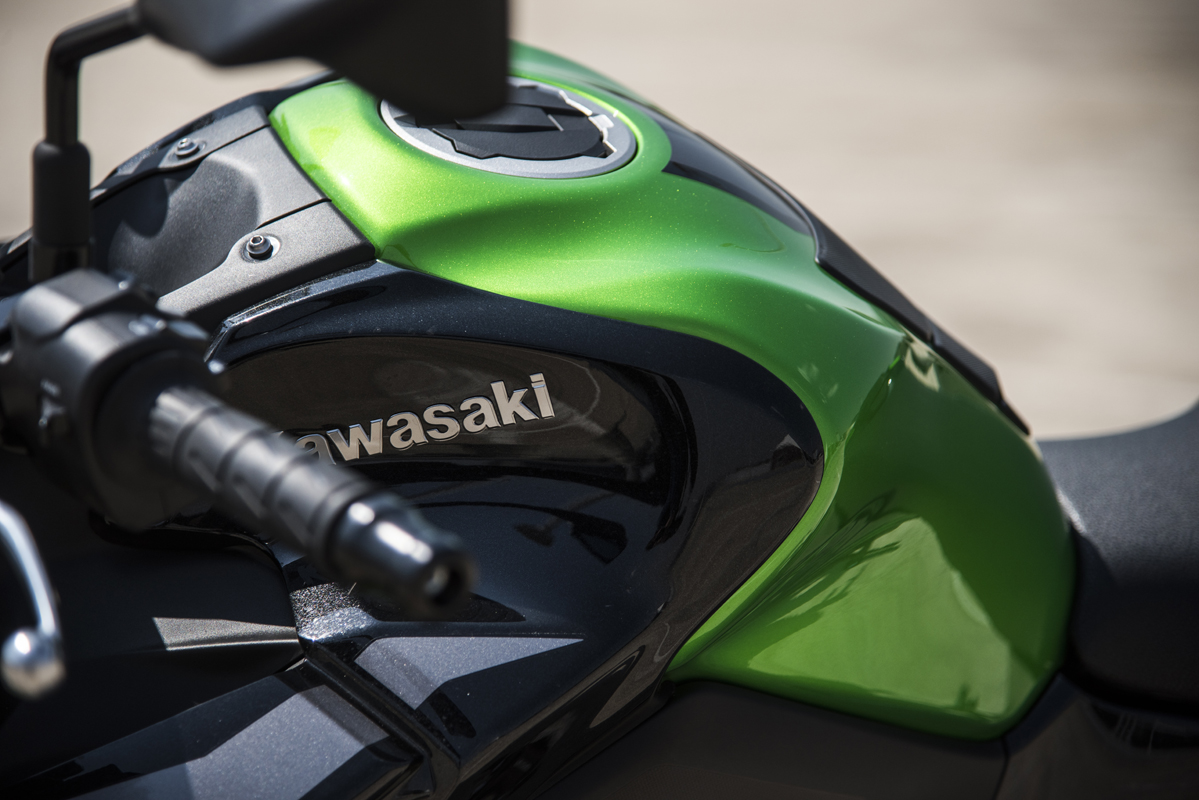
At the end of the day, Kawasaki’s Z900 offers you real-world versatility in a confidence-inspiring package, which is super easy to live with. Unlike its competitors, the Kawasaki sort of does it all and will always score a 4/5. The best part is, you don’t have to break the bank either!
The Z900 will cost you a lightweight bill of 165k, now that is a bargain with almost all of its serious competitors costing you 200k plus VAT. You could argue that the Z900 is too clinical or boring for your taste buds, but I doubt you’d find a better-naked bike that can do it all.


